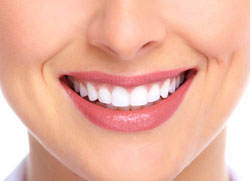
The stem cells in our teeth can be energized to fill in chips, cracks, and cavities, researchers say, and the findings could one day possibly make dental cement obsolete.
The work has been conducted just in mice so far, but the research, published Monday in the journal Scientific Reports, highlights a way to motivate stem cells to repair tooth defects at a scale they normally can?t, with a drug that already has some safety testing behind it. It also demonstrates the potential of a type of stem cell therapy in which the cells are stimulated in place, rather than taken out, manipulated, and put back in.
?We?re mobilizing stem cells in the body and it works,? said Paul Sharpe, a researcher at King?s College London and an author of the new paper. ?If it works for teeth, chances are it could work for other organs.?
Experts not involved with the work noted that while it is in early stages, the simplicity of the approach should ease its path into the next phases of research that show whether it might produce the same results in people.
?These important steps close down the translational gap and bring this discovery a step closer to future clinical applications,? Dr. Vanessa Chrepa, a researcher at the University of Washington, wrote in an email. ?This work will hopefully set the stage for clinical studies in the near future.?
When teeth lose some of their dentin ? the bony tissue beneath the enamel that makes up the bulk of the tooth ? the stem cells tucked deep inside mount a recovery effort and manufacture new dentin (which is also spelled dentine). The problem, Sharpe said, is that the natural repair mechanism can only regrow small amounts of dentin and can?t make up all that is lost when a tooth suffers a serious injury, contracts a major infection, or takes on the sharp end of a dentist?s drill.
Because of the limits of the teeth?s ability to repair themselves, dentists have to fill or seal teeth to prevent further infection and degradation. But dental cement also prevents the tooth from ever returning to its natural, pearly white self.
Sharpe and his team have been trying to understand how the natural repair mechanism works in hopes of converting that understanding into a way to super-power it. As part of their research, they discovered that a group of molecules called glycogen synthase kinase inhibitors (or GSK-3 inhibitors) boosts the stem cells? ability to stimulate production of dentin beyond what normally occurs.
For the new study, the researchers drilled tiny holes into mice?s molars to expose the tooth?s pulp, where the stem cells live. They then inserted collagen sponges that had been soaked in one of three types of GSK-3 inhibitors and covered the tooth.
After six weeks, the researchers removed the teeth and found that the sponges had dissolved and the lost dentin had mostly been regenerated.
?They?ve harnessed the signaling pathway that promotes natural repair,? said Megan Pugach, a researcher at the Forsyth Institute in Cambridge, Mass., and at the Harvard School of Dental Medicine, who was not involved with the research.
Sharpe and his team are now conducting similar studies in rats to make sure the approach can generate enough dentin to fill in larger holes in larger teeth before trying to study the method in people. But two aspects of the approach could help ease its path into clinical trials.





